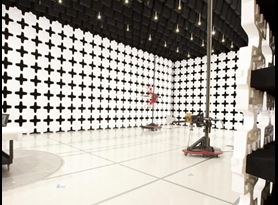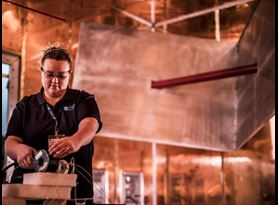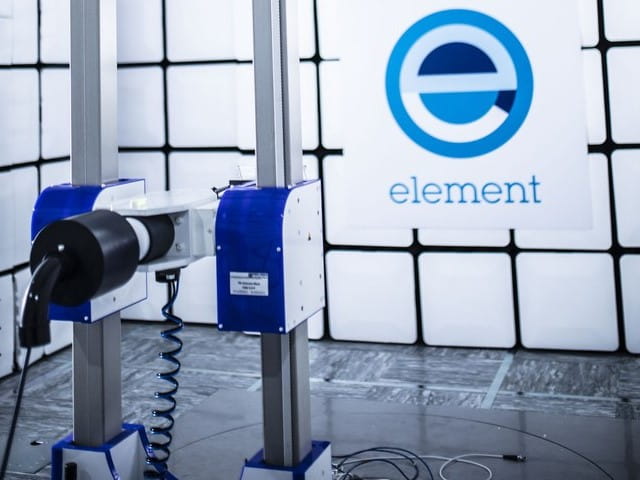Wireless Power Transfer and Wireless Charging

Trevor is a Principal EMC Test Engineer with 15 years’ experience ranging from commercial, medical and wireless EMC including both testing and regulatory knowledge.
What is Wireless Power Transfer (WPT)?
Wireless Power Transfer, the process behind wireless charging bases and wireless charging devices, has forever changed how we think about ‘smart’ products. Today’s product designers are busy exploring exciting new applications for the technology, from cell phones (wireless Qi) to Electric Vehicles (EV). In the U.S. alone, the WPT market is expected to reach $12 billion by the end of 2022, with much of the demand coming from industrial and healthcare-related products. Due to a multitude of end-use possibilities and benefits for end users, such as convenience, reduced energy use, and prolonged battery, the consumer market will continue to drive demand for wireless charging.
Wireless Power Transfer takes several different forms, but the most common today is the use of magnetic resonance to provide a safe, flexible, and convenient option to electrically charge products. While some manufacturers are beginning to look at using higher frequencies for WPT, this article focuses on the devices that operate less than 1 MHz.
The radio frequency function of these wireless charging devices is the wireless transmission of energy between a wireless power source and a receiver. Because these devices are used in close contact with humans, product safety considerations are imperative. These devices must adhere to FCC guidelines for RF exposure. EMC compliance for wireless charging devices is also required due to the transmission of energy during use.
FCC guidelines for Radio Frequency (RF) exposure
The KDB 680106 of the FCC Guidelines states that devices specifically intended for use for wireless power transfer, or inductive charging, require FCC guidance. This includes Part 18 devices. It may be necessary for the responsible party (manufacturer) to seek support from the FCC on specific WPT devices by submitting a KDB inquiry. More information on this here.
How to proceed with FCC approvals
In the U.S, product manufacturers must seek guidance from the FCC by submitting a Wireless Power Transfer related Equipment Compliance Review (ECR) inquiry, unless the device meets the following requirements per KDB 680160 section 5.2 (outlined below).
Requirements cited per KDB 680160 section 5:
- The power transfer frequency is below 1 MHz.
- The output power from each transmitting element (e.g., coil) is less than or equal to 15 watts.
- A client device providing the maximum permitted load is placed in physical contact with the transmitter (i.e., the surfaces of the transmitter and client device enclosures need to be in physical contact)
- Only § 2.1091-Mobile exposure conditions apply (i.e., this provision does not cover § 2.1093-Portable exposure conditions).
- The E-field and H-field strengths, at and beyond 20 cm surrounding the device surface, are demonstrated to be less than 50% of the applicable MPE limit, per KDB 447498, Table 1.These measurements shall be taken along the principal axes of the device, with one axis oriented along the direction of the estimated maximum field strength, and for three points per axis or until a 1/d (inverse distance from the emitter structure) field strength decay is observed. Symmetry considerations may be used for test reduction purposes. The device shall be operated in documented worst-case compliance scenarios (i.e., the ones that lead to the maximum field components), and while all the radiating structures (e.g., coils or antennas) that by design can simultaneously transmit are energized at their nominal maximum power.
- For systems with more than one radiating structure, the conditions specified in (5) must be met when the system is fully loaded (i.e., clients absorbing maximum power available), and with all the radiating
structures operating at maximum power at the same time, as per design conditions. If the design allows one or more radiating structures to be powered at a higher level while other radiating structures are not powered, then those cases must be tested as well. For instance, a device may use three RF coils powered at 5 W, or
one coil powered at 15 W: in this case, both scenarios shall be tested.
The inquiry to the FCC should include the following:
- Complete product description, including coil diameters, number of turns and current
- FCC Rule Part(s) the device will operate under and the basis for selecting the Rule Part(s)
- Planned equipment authorization procedure (i.e., SDoC or certification)
- Drawings, illustrations
- WPT operating frequency (or frequencies).
- Conducted power for each radiating structure.
- § 2.1091-Mobile or § 2.1093-Portable demonstrated scenarios of operation, including RF exposure compliance information
- Maximum distance from the WPT transmitter at which, by design, a load can be charged (including slow-charging operations)
RF exposure guidelines in Canada
Canada takes a different approach to RF exposure for wireless inductive charging devices, separating products and sub-components into three type categories per RSS-216:
- Type 1: Does not transmit any intelligence and does not require certification
- Type 2: Category II Radio - includes modulation on WPT frequency but is certification exempt
- Type 3: Category I Radio - requires certification
WPT devices must also comply with the Health Canada’s Safety Code 6 for RF exposure. When assessing compliance, all transmitters must be at maximum power. This includes those not used for power transfer.
In addition to traditional RF exposure assessments, Canada requires an evaluation of Nerve Stimulation per RSS-102.NS.MEAS. Contact Element if you would like to know more.
EMC compliance for wireless charging devices
For the FCC, a radiator would need to be tested and certified under FCC part 15C (FCC 15.209, FCC 15.225, etc.) if it is intended for telecommunications applications involving the transmission of data. FCC Part 18 is allowed where no intelligence is transmitted, and RF is used to perform work heating, welding, treatment of materials, and charging. Only in specific cases, and by very limited means, is charge status (but not temperature) allowed to be transmitted via Part 18.
Requirements cited per KDB 680160 section 2a:
Part 18 permits devices operating in the Industrial, Scientific, and Medical (ISM) bands to generate and use RF energy for industrial, scientific, medical, domestic, or similar purposes, excluding applications in the field of telecommunication. In this context, ISM transmitters designed to detect load impedance changes, also referred to as “load modulation,” are permitted under Part 18. The load modulation must be an integral part of the power management and control of the WPT device, and must be used only to the extent necessary to enable safe and efficient operations; for instance, rapid shut-down in response to over-voltage conditions, charging status reporting, or identification of receiver/target devices for which the WPT was intended.
For devices authorized under Part 18, load modulation may not be used to communicate any other information, such as device prioritization, or system status data, commands, sounds, images, etc. When communication is part of the design, both Part 15 and Part 18 requirements, as applicable, must be met for equipment authorization purposes. Similarly, devices that use a secondary frequency for load management, control, and data functions must be authorized according to both Part 15 and Part 18 requirements, as appropriate.
For Canada, per RSS-216, devices without communication would be tested to ICES-001, which references CISPR 11 group 2. Devices with communication would be tested to the relevant product standard (RSS-210, RSS-310, etc.).
Similar to the US and Canada, a pure wireless power transfer system would not fall under the RED in the EU. See the definition in the RED guide. However, ANY form of communication, such as load modulation, would fall under the RED.
Products and applications that use electromagnetic waves exclusively for purposes other than radio communication and/or radiodetermination (products that propagate electromagnetic waves in space, but are not intended for the purpose of radio communication or radiodetermination) are not covered by the RED, for example:
- Inductive warming or heating appliances (including cookware)
- Pure wireless power transfer (excluding any communication or radiodetermination)
- High frequency surgical equipment
- Test equipment if intended to use radio waves exclusively for testing other devices
Generally, a device with communication would be tested to EN 303 417 or EN 300 330 along with the applicable EN 301 489 product standard. The intentional RF portion of the device without communication would fall under EN 55011 (CISPR 11 Group 2).
Questions?
If you would like additional information about RF Exposure or EMC compliance for your WPT devices, contact Element to speak with one of our engaged experts today.
Find related Resources
Get white papers, updates and event invites
Subscribe to content updates
Related Services

Radio and Wireless Device Testing
We work with everyone from Chipset Vendors to those integrating radio modules to enable you to deliver your wireless radio products to market.

Product Certification and Approvals
Element has a dedicated team of experts providing ISO 17065 accredited certification services from offices across the globe.

EMC Testing Services
Find out how Element delivers electromagnetic compatibility testing (EMC) solutions to RTCA/DO-160, MIL-STD-461 and Def-Stan 59-411 standards.

Aerospace EMI/EMC Testing
Element has a proven record of delivering high-volume EMI/EMC testing to meet standards such as RTCA/DO-160 for civil aircraft requirements.
